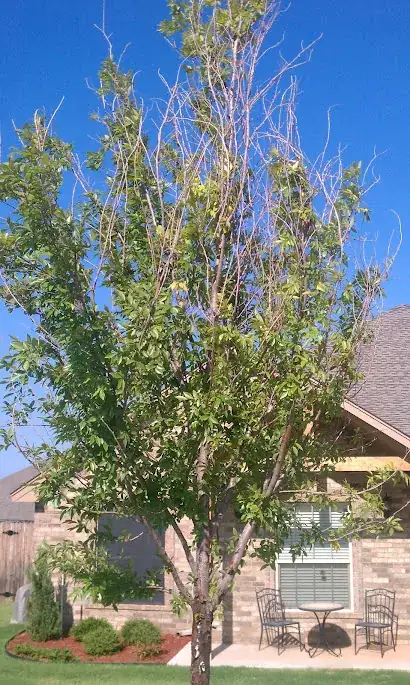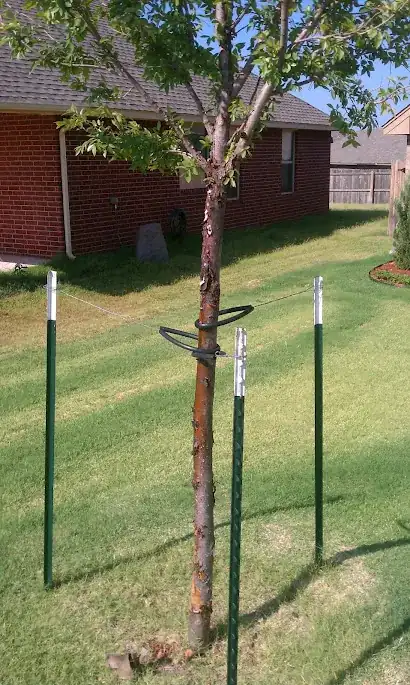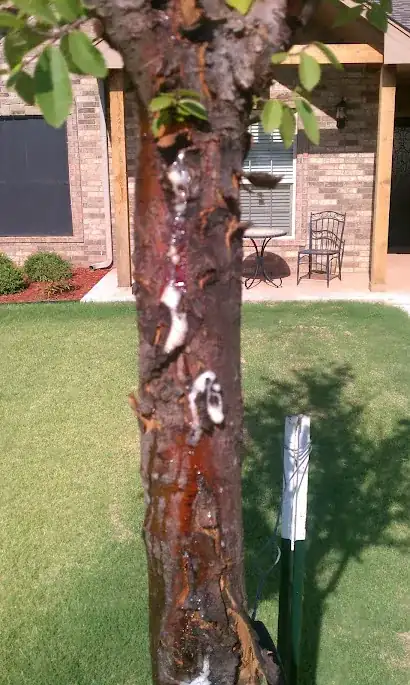Our builder planted this tree, and I have no idea what kind it is. The bark seems to split and a lot of sap runs out of the tree. Since I don't know what kind of tree this is, I haven't been able to find out if this is normal or not. A lot of the branches have been dying as you can tell from the pic. It also appears that they planted it in a burlap sack. I only staked the tree because it is really windy here in Oklahoma City and I thought the root ball was moving around a little too much.
Here are my questions:
- Can anyone id the tree from the pics?
- What should I do with all the dead branches? Cut them off or leave them as is?
- Is the bark splitting off and sap leaking a normal behavior of this tree, or is it needing something from me?
Let me know if you need more info!


